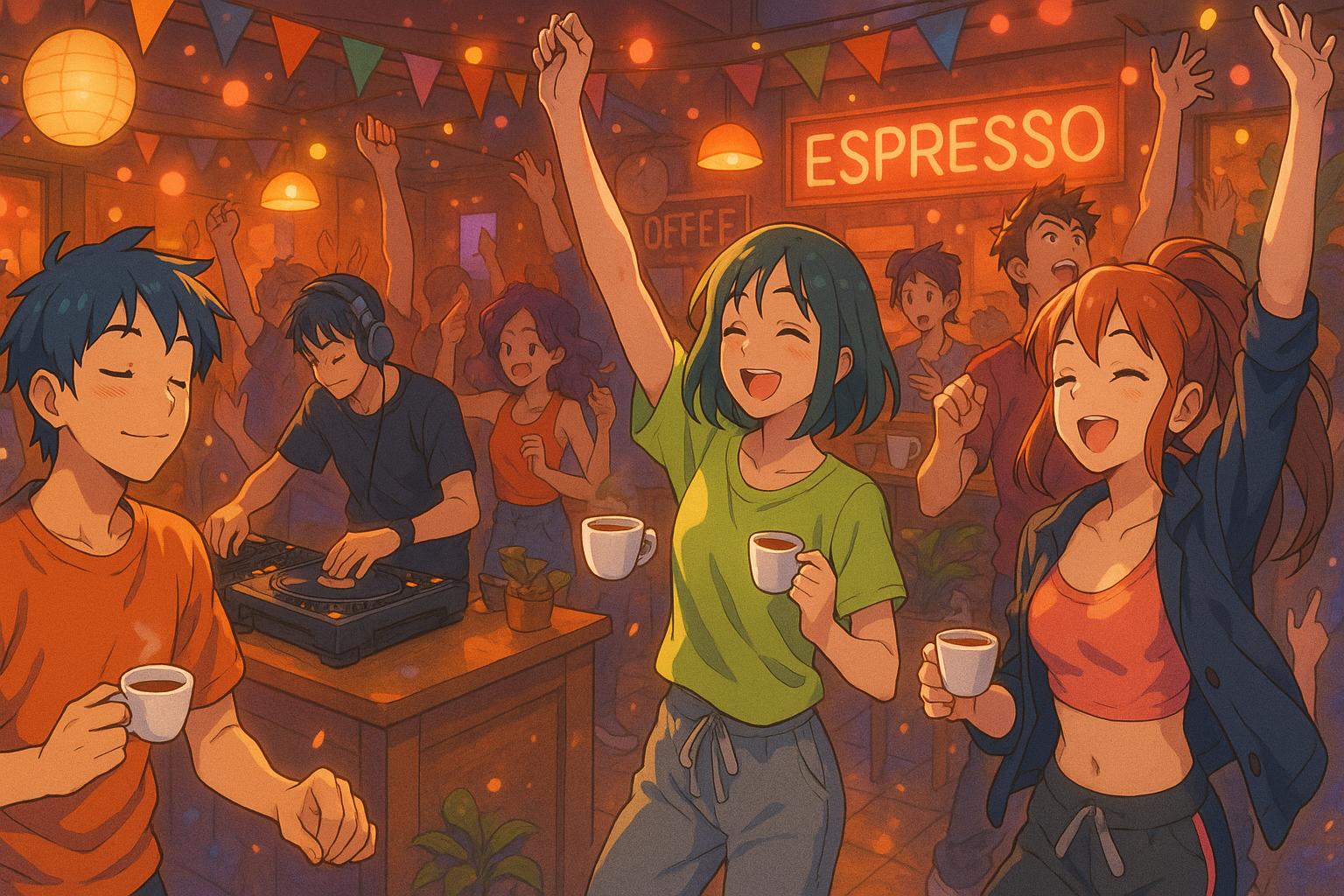The excitement of turning 18 often heralds the dawn of a new social adventure: nightclub culture, punctuated by vodka shots and late-night dancing. However, as recent trends indicate, this thrilling rite of passage is yielding to an innovative phenomenon — coffee shop raves. This emergent trend signals a profound cultural shift among young adults, particularly among Gen Z, who are redefining what it means to enjoy nightlife.
Coffee shop raves offer a refreshing alternative to traditional nightclubs. They come without the burdens of expensive entry fees, enforced dress codes, and the pressure to consume alcohol. Instead, attendees enjoy espresso and banana bread while engaging with vibrant social scenes and live DJs. Over the past three years, a staggering 3,000 nightclubs, bars, and pubs have closed in London alone — a sign that the nightlife industry is under significant strain. As financial pressures mount, many young people are increasingly disinclined to venture out late at night, preferring instead the affordable, relaxed environment of coffee shop gatherings.
The shift away from traditional nightlife can be attributed to a variety of factors. Financial constraints are a substantial concern, with recent figures from the Night Time Industries Association (NTIA) showing a notable decrease in late-night outings among 18- to 30-year-olds. This demographic also grapples with safety concerns; over a third report feeling anxious or unsafe when going out at night. In light of these societal changes, coffee shop raves provide a safe, inclusive space where music reigns supreme, enhancing social connection without the usual trappings of nightlife.
Among the pioneers of this trend is DJ Louis Bekk, whose collaboration with How Matcha in Marylebone has garnered attention and praise. Bekk, who transitioned from classical music to DJing, aims to shift the focus of live music from exclusivity to accessibility. “The nights are centred around alcohol and looking good rather than the music and the art itself,” he noted. This ethos pervades the coffee shop rave scene, where the emphasis lies on community and enjoyment rather than mere spectacle.
The rise of coffee shop raves has coincided with a broader cultural movement towards health-conscious living. A significant percentage of young adults are abstaining from alcohol due to health concerns — 43 percent of individuals aged 18 to 34 report giving up drinking entirely. This shift aligns with a trend termed “Cinderella partying,” where younger generations prefer to return home at a reasonable hour, ready to resume their daily routines. Morning gatherings, often infused with healthy food options and revitalising beverages, provide an ideal setting for this new way of socialising.
The successful formula has piqued the interest of various establishments seeking to reinvent their spaces. Following How Matcha’s lead, Farmer J’s debut rave attracted hundreds of participants eager to dance, mingle, and enjoy wholesome fare, all within a relaxed atmosphere. This setting fosters inclusivity across age groups, with families and various individuals attending in comfort, free from the stigma typically associated with nightlife.
As the concept of daytime raves gains traction, it reflects not just the preferences of today’s youth but also an intelligent response to economic realities. In an era where many are searching for enjoyment without the financial burden or the prescriptive atmosphere of nightclubs, coffee shop raves epitomise a smart, health-conscious fun. Given the prevalence of influencers promoting a lifestyle prioritising well-being and rest, it won't be long before the trend solidifies further, shaping future social norms.
This new wave of enjoyment may not merely be a fleeting fad; it encapsulates a broader reimagining of nightlife, aligning socialising with wellness and community. As we move ahead, it appears that the vibrant, crowded floors of Ibiza are giving way to the creamy comfort of lattes and the lyrical flow of café beats, firmly positioning the coffee shop rave as the new heart of social interaction for an evolving generation.
Reference Map
- Paragraphs 1, 2, 3, 4, 5, 6, 7
- Paragraphs 2, 3, 5
- Paragraphs 3
- Paragraphs 1, 6
- Paragraphs 3
- Paragraphs 3
- Paragraphs 3
Source: Noah Wire Services
